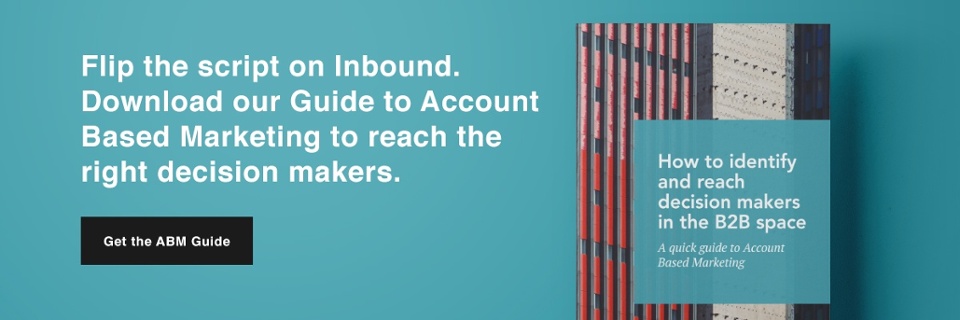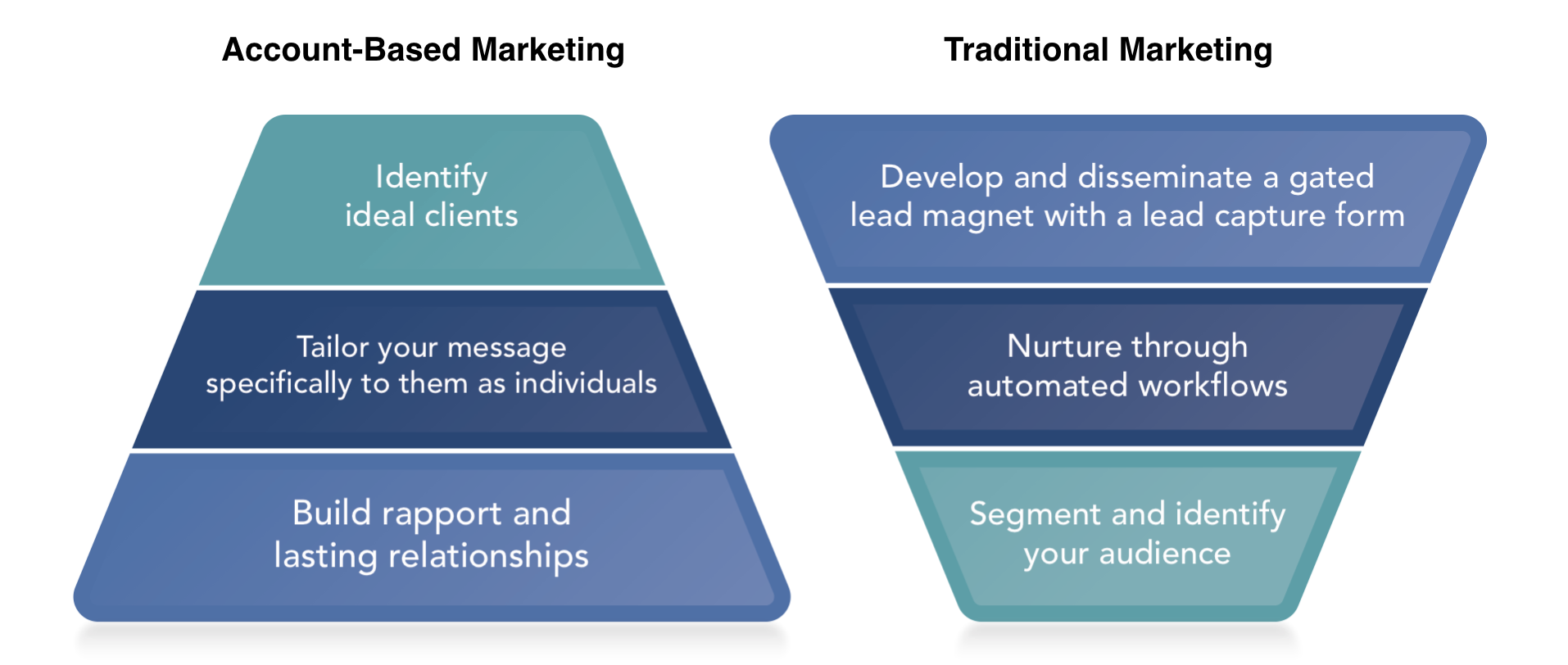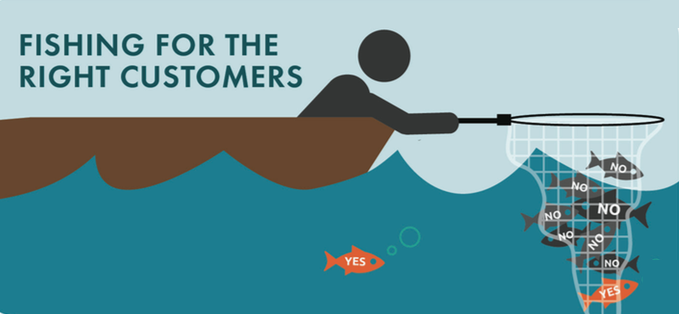What is Account-based Marketing
Account based marketing (ABM) is a business marketing strategy that concentrates resources on a set of target accounts within a market.
It uses personalised campaigns designed to engage each account, basing the marketing message on the specific attributes and needs of the account.
Account-based marketing (ABM) is a targeted approach to B2B lead generation in which marketing and sales work together to identify best-fit accounts and convert them into customers.
With so much information available online, marketers are always trying to get people’s attention. Because of this, if a company wants to focus on the highest ROI, it needs to keep its attention on high-value clients, maintaining client penetration, marketing penetration, as well as logos in mind.
Marketing teams need to employ strategies that blend the skills of sales and marketing to identify, engage with, and win deals from high-value accounts that are important to them.
In summary, Account based marketing is a focused approach to B2B marketing in which marketing and sales teams work together to target best-fit accounts and turn them into customers.
It helps you get more out of your marketing dollars by focusing on the individual characteristics of each account. Beyond generate new business leads, It encourages upselling and cross selling to maximise revenue from your Target Accounts.

Why adopt Account-based Marketing
The traditional B2B sales and marketing funnel is broken.
As it stands today, B2B marketing tends to take a broad approach to lead capture with the goal of capturing the most leads possible.
The problem with this approach is that it gets narrower at the bottom, so most B2B leads over 90% never become customers.
On the other hand, account-based marketing flips the B2B funnel upside down.

This approach to account-based marketing challenges the traditional lead-driven, inbound-only marketing funnel. Learn more about the differences between Inbound Marketing and ABM.
"According to Alterra Group, 97% of marketers achieved a higher return on investment (ROI) with ABM than with other marketing initiatives."
How Does Account Based Marketing Actually Work?
There are many Vendors and tools out there that purport to deliver on your Organisation's ABM ambitions but often, as these tools rely heavily on third-party advertising and demographic data, we have found that most of these do not work effectively in Singapore and the wider APAC region, because of a lack of reliable data within these platforms that is specific to our Geo.
So its almost impossible to just buy an ABM Solution and think you're ready to effectively Target your Key Accounts.
Targeting Data
This is because, at its executional core, ABM is uses digital targeting to reach specific, best-fit companies called target accounts that fit your organization's ideal customer profile.
The challenge lies in the lack of targeting data in this region which will allow you to identify and target such users. You can download our Guide on How To Identify And Reach Decision Makers In The B2B Space in APAC.

Here at Construct Digital, we have developed a proprietary technology to help B2B companies identify and target Key Accounts based on local data that is accurate and up to date. Serious about your ABM strategy? Then talk to the Leader in ABM Marketing in Singapore.
Alignment between Sales and Marketing = SMarketing
According to SiriusDecisions, closely aligned B2B companies grow revenue 19 percent faster than their non-aligned counterparts.
The first step of Account Based Marketing involves your sales and marketing teams identifying and agreeing on key accounts to target for new business development.

It means both teams need to focus on the same goals, that is, they should work together to generate revenue from their target accounts. Above all, this emphasises the importance of the marketing department's role in the sales cycle.
Personalisation
The premise of ABM is to target specific roles within your target accounts with messaging that will resonate with the Target Persona.
This requires an understanding of the persona's Pain Points and a significant investment in developing the right messaging and Creatives to address the pain points of the decision makers within the Target Account.
I believe this is best illustrated by an example.
Case Study Example
Suppose you sell Enterprise Human Resource Software to Fortune 5000 companies in Asia.
The marketing team works out the target Personas that would be involved in the purchase decision as listed below in various influencing and decision making roles. For simplicity, we have just identified 2 personas:
1) Influencer: HR Director:
Pain Point: Needs a solution to manage HR processes for a growing Team in Asia.
Messaging and Value Proposition: Feature and Benefit led messaging
2) Decision Maker: CFO:
Pain Point: Wants to maximise ROI on Software Investment
Messaging and Value Proposition: Value proposition based on the efficiencies HR can derive from the software investment.
As can be seen from the above, we would need to develop specific Creatives and messages targeted at each of the above Personas.
This way we can effectively influence each of the stakeholders within the target account with what matters to them.
6 Steps to Building Your ABM Strategy
1. Human Psychology is your secret weapon
Remember that the people you are trying to influence in that account are exactly that - people!
Here at Construct Digital, we are very cognisant of this fact so we always approach B2B marketing with the principle of what we call B2Human marketing.

Your target account will include a group of people who are responsible for making important decisions, involving C-Suite, executives and many other key decision-makers. But to really connect, you need to look past their job titles and status to understand who they truly are.
As described above in the example, these decision-makers have likes, dislikes, strengths, weaknesses, needs, desires. It’s your job to figure out what makes them tick.
Psychology plays an important role here. To understand the account, you must first understand the individual. What keeps them awake at night? What are they trying to achieve both personally and professionally?
If you don't know who you're personalising for, you can't create personalised experiences.
There’s a wide range of supporting frameworks and technologies that you can use to help you get to know your key decision-makers. These include building Buyer Personas with psychometric data as well as some AI based applications that can help you understand your target audience's sentiments and feelings.
Also its useful to group all of your Decision Makers within your CRM into a singular Account View so your Sales team can track all interactions between your organisation and decision makers in the target account in a single location.
This added visibility will allow Sales to influence decision makers within an organisation with a cohesive strategy. Marketing Automation software like HubSpot and Marketo have implemented such Account-based features to help you better manage ABM accounts.
2. Adopt a consistent methodology
ABM is not a one-man band.
It takes a lot of teamwork, and if you want to get the most out it, you need to be willing to invest both in money and time.
But the truth is that you won't get far if you don't align marketing and sales. That means you need to have a consistent and actionable framework to ensure everyone is working off the same page.
Adopting a framework across your organization will help you create a clear, actionable roadmap for your business. This helps you to think in small steps, instead of getting distracted by the complexity that can come with implementing an ABM strategy.

So how do you get from account selection to forming a relationship with that account? And how do you get from there to closing the deal?
By breaking your approach into these smaller steps, you'll be able to get buy-in from your team, and they'll know exactly what needs to happen and when.
Every organization will have a different set of processes, a different culture, and a different team. And ABM isn't a one-size-fit-all strategy, so adapt it to fit your organization.
Make it personal. Make it your own. Make ABM your best friend, and ensure it complements your long-term business objectives and strategy.
Here at Construct Digital, we leverage the ITSMA framework both for our internal marketing programs and those we run for our clients. However, we freely adapt and modify elements to ensure the best fit program for each organization.
3. Train, educate and Align!
To create a strong program, you must get buy-in from everyone involved. But it doesn't come for free, and it certainly doesn't arrive on your doorstep out-of-nowhere.
To gain stakeholders' buy-in, you will need to invest in training and education for your team so they can inspire and motivate them.
This includes sharing best practice, success stories, potential outcomes, and mistakes you’ve learned from along the way.
To create that ABM ecosystem, you essentially need to become an ABM consultant - ready to guide and support your team throughout this journey.
I have seen a number of client approach us to run an ABM campaign, but who have not done the work within the organisation to identify target accounts nor educated the Sales teams on how to a manage leads driven from Target Accounts.
Personally, it's easy to spot a marketing organisation that will fail with their ABM strategies, if they can't even work with Sales to identify the right Target Accounts.
4. Get Sales on your side
Don't be fooled by the word "Marketing" in Account-based Marketing. It is the Sales organisation that forms the backbone of any ABM strategy.
Without your sales team, you lack insight into the target accounts' needs and challenges. You don't understand their business well enough to communicate effectively. So it’s pretty obvious that you need to have Sales on your side!
What can you do to ensure that you get the most out your relationship with Sales?
a) Be flexible and humble. We both have a reputation for being stubborn, but that’ s because we’re both prone to sticking to our guns. To have a strong relationship with sales, you need to be flexible and work alongside them - rather than against them.
b) Build confidence in your sales team by doing what you're able to do to inspire them. Tell Sales about your successes, share data points and case study results. It’s not about education, but rather inspiration and support.
5. Personalisation matters but its not all about Custom content
As ABM becomes increasingly popular, it’s inevitable that there will be a huge amount of misinformation out there.
Luckily for you, we’re here to share our knowledge and experiences to help you separate fact from fiction.
ABM is not a tactic. We see it as an organization-wide program that is centered around the customer.
Contrary to popular belief (and some people), that isn't the same thing as custom content.

Personalization is an important element of an Account-based strategy - but its not the end all and be all of ABM.
Your custom content is to support the strategy, but it’s not the whole program. It is just a stepping stone to help get you to the next stage.
And to get the most out of custom content, you should be thinking about:
- What channels should you be using to reach your target audience?
- How can you incorporate that customer psychology to be more effective in your messaging?
- How can you make your custom content more specific to your target account?
- How can you get this content in front of key decision-makers?
6. Most importantly, Invest your time in account selection
Without your accounts, you won't be able to run an Account-based marketing program. So it makes sense for you to invest a significant amount of your time working with Sales to select the right accounts for your organization.
But this isn‘t always a straightforward. And chances are, you‘ll go back and forth a couple of times before you get it exactly right.
The key is to get started early, and ensure you're getting input from your sales team. After all, they know your clients better than anyone else.
Whatever marketing campaigns you choose to implement later down the line will either succeed or fail, based on how well you have selected your Target Accounts.
Think of it as your ABM building's foundation. Without having a solid foundation, the rest will fall apart.
ABM in a Nutshell
ABM is not a tactic. It should be an organization-wide program that is centered around the customer. Personalization is important for account-based strategies, but it's not the only element of ABM. You need to invest time in account selection to make sure your campaigns will succeed as well as figure out the best way to get the right content in front of the right decision maker. Good luck!